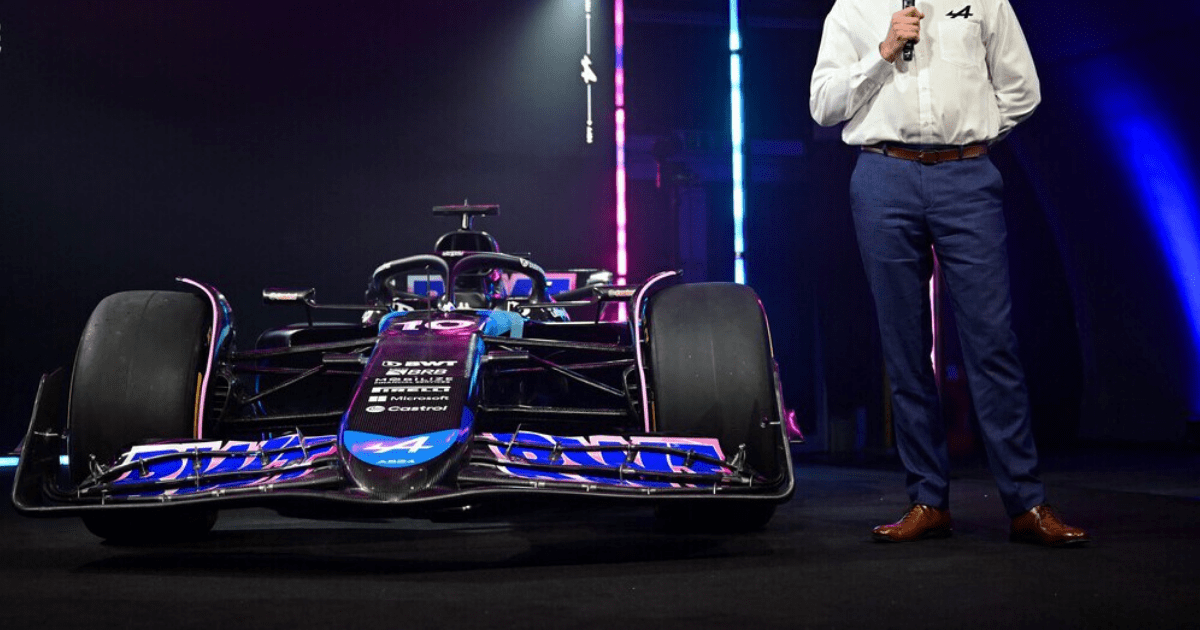Resignations Amidst Horror Start
Alpine, the F1 team part-owned by Hollywood duo Ryan Reynolds and Rob McElhenney, faced a nightmare start to the new season as two of its top chiefs, technical director Matt Harman and head of aerodynamics Dirk de Beer, have resigned. The resignations come after the team's lackluster performance at the Bahrain Grand Prix.
Uncompetitive Car Blamed
Harman and De Beer reportedly stepped down due to the team's car being deemed "uncompetitive." This adds to a series of departures from Alpine, with principal Otmar Szafnauer and sporting director Alan Permane leaving midway through last year's Belgian GP.
Hollywood Partnership
Alpine, previously known as Renault, is now partially owned by Hollywood actors Ryan Reynolds and Rob McElhenney, along with Otro Capital and RedBird Capital Partners. Their involvement in the team comes after their recent purchase of football club Wrexham for £170 million.
No Comment from Alpine
Alpine has declined to comment on the resignations of Harman and De Beer, leaving fans and experts speculating on the future direction of the team amidst the ongoing changes in leadership.
Frequently Asked Questions
What is the role a Formula 1 Race Engineer?
A Formula 1 race engineer is pivotal in managing various aspects of the car and driver performance throughout a race weekend. They communicate constantly with drivers, giving them critical updates on strategy and information. They also coordinate with their team in the pits, making real-time decisions. The race engineers make critical decisions regarding tire changes and car adjustments. They also decide on race tactics.
How do drivers qualify for a Formula 1 race?
A Formula 1 race qualifies through a knockout-system the day prior to the race. It’s split into three segments – Q1, Q2, and Q3. Initially, all drivers compete in Q1, with the slowest five cars being eliminated. Five more cars are then eliminated from the Q2 group of 15 drivers. The top 10 drivers then move onto Q3, where they will compete for pole position and to determine the order of the first 10 positions in the grid.
What are power unit in Formula 1 cars
The Formula 1 Power Unit consists a hybrid engine and Energy Recovery System. The ICE is a turbocharged V6 engine, while the ERS captures energy from the car’s braking and exhaust systems to provide additional power. This combination not only increases performance, but also efficiency. It contributes to the fascinating mix of speed and advanced technology in the sport.
Can Formula 1 teams run their cars all year round?
Formula 1 teams cannot test their cars all year round. The FIA regulates pre-season and during-season testing. These restrictions are put in place to maintain an even playing field and control costs. Teams must therefore make the most out of the limited testing opportunities to prepare their cars and gather data for the races ahead.
What is the difference between slick and wet tires in F1?
Formula 1 Slick Tires are designed for dry, hot conditions. They have a smooth, flat surface that provides maximum grip. Conversely, wet tires, which include intermediates and full wets, have tread patterns that disperse water on wet tracks, reducing the risk of aquaplaning, and offering traction in rainy conditions. While full wets work best in heavy rain, intermediates can handle light to moderate rain.
What role do aerodynamics play in Formula 1?
Aerodynamics play a crucial role in Formula 1 because they affect drag and downforce. Downforce forces the car to the track which increases grip, allowing drivers to maintain high speed through corners. Teams invest a great deal of money to improve aerodynamic performance and gain every possible advantage.
Statistics
- As of the latest season, Mercedes AMG Petronas has won eight consecutive Constructors’ Championships, the longest streak in Formula 1 history.
- The highest number of cars to start a Formula 1 race was 34 at the 1953 German Grand Prix.
- The 2020 Formula 1 season comprised the shortest calendar in recent history with just 17 races, due to the global impact of the COVID-19 pandemic.
- Sebastian Vettel became the youngest World Champion in Formula 1 history, securing his first title at the age of 23 years and 134 days in 2010.
- The largest winning margin in a Formula 1 race was recorded by Jim Clark in 1963 at the Belgian Grand Prix, with a lead of nearly 5 minutes over the second-place finisher.
- Ayrton Senna holds the record for most consecutive pole positions, achieving a series of eight poles from the 1988 Spanish Grand Prix to the 1989 United States Grand Prix.
- Lewis Hamilton has the most career wins of any driver in Formula 1, amassing over 100 victories.
- The Italian Grand Prix at Monza is known as the ‘Temple of Speed’, which has the highest average speed of any circuit on the current Formula 1 calendar.
External Links
f1i.com
pitpass.com
racing-statistics.com
f1technical.net
gptoday.net
racefans.net
motorsport.com
espn.com
How To
How to Understand Formula 1 Aerodynamics
Aerodynamics are essential to understanding Formula 1 performance. Aerodynamics is the primary focus of F1 aerodynamics. It involves controlling the airflow to minimize drag and maximize downforce. This helps the car stay on track, improving cornering speed. For a better understanding of the fundamentals, you should focus on the influence of components like the bargeboards and underfloor as well as the rear wing. Be familiar with the rules that are currently affecting car design. Attend technical discussions held on motorsport-specific platforms, where experts analyze the latest innovations of F1 aerodynamics.

